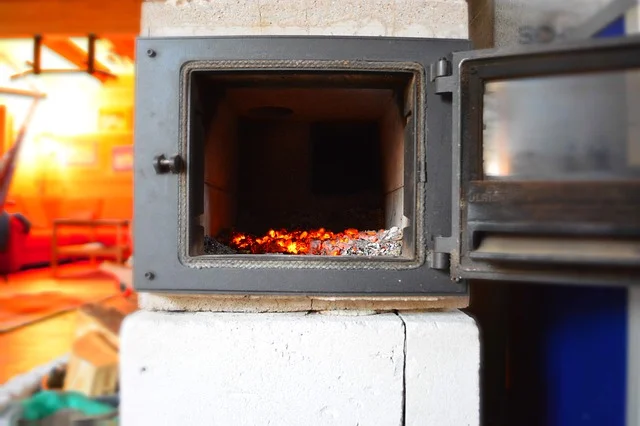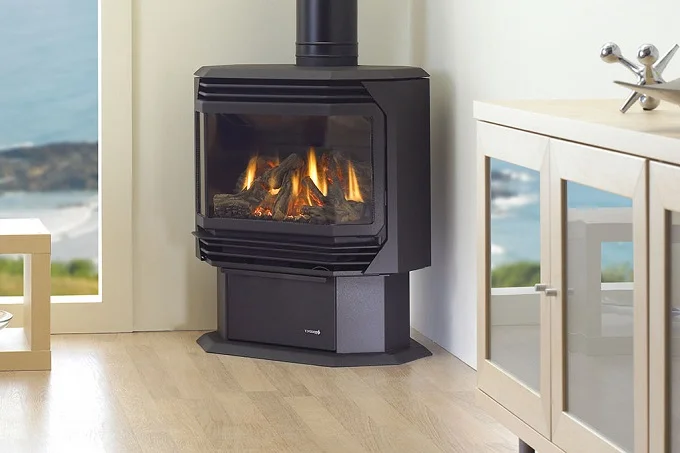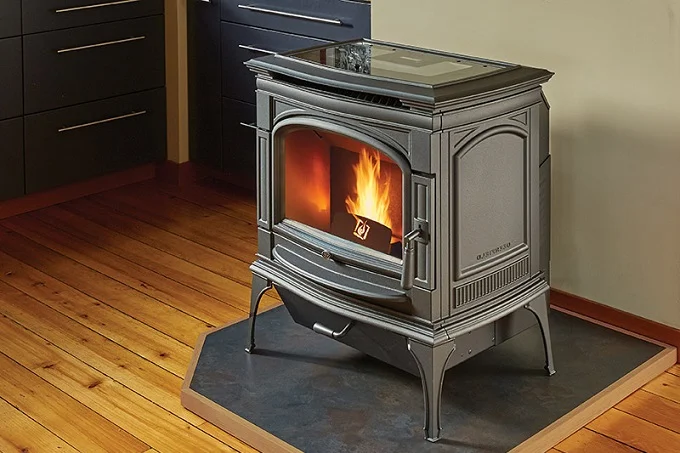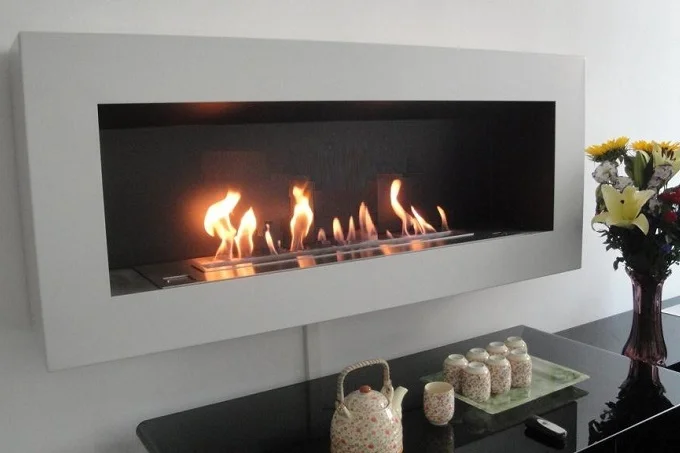Make a cold house warm: which type of stove is suitable for your home?

A stove or fireplace as the main source of heat? Nowadays, there are more efficient methods for this, such as boilers, heating boilers, and wall and floor heating.
Yet stoves and fireplaces still offer added value as a mood maker and additional heating. But which type of stove or fireplace best suits your home? An overview.
1. Wood-burning stoves and fireplaces

Due to the low efficiency, the traditional fireplace has fallen into disuse. Nevertheless, heating on wood remains extremely popular, thanks to the pleasant radiant heat, the typical smell, and the crackling sound. After all, for many, it is the experience that counts.
Heat
A stove heats both the air and the room itself. The rule of thumb is simple: the larger the combustion chamber of your stove, the more heat it gives off. The extremes are between about 5 and 22 kW. Due to the high heat emission, wood-fired appliances are especially suitable for large, old homes. In a well-insulated new building, they quickly cause overheating.
Ecology
Older appliances, in particular, score poorly in terms of particulate emissions. New models have to meet the strictest European emission standards and achieve high returns, and often have an A or A+ energy label. At least in theory: you still determine the amount of wood you burn and the associated emissions.
Use
Do you want to heat with wood? There is something to consider. You have to maintain the stock of wood, load and ignite the stove, clear the ashes… Preheating is not possible, controlling the temperature is difficult. A lot of hassle, or just part of the experience?
Practical
The most important condition for installing a wood-burning fireplace or stove? A solid flue gas outlet that goes right through the roof and that you have to clean at least every two years. A dry storage place for your wood is certainly not a luxury.
2. Gas stoves and fireplaces

Gas stoves and fireplaces have been the most popular for some time now. They combine the charm of a real flame with ease of use and low power.
Heat
Gas appliances are available in various capacities. The big advantage is that you can regulate the heat output yourself. A fireplace insert provides between 5 and 12 kW of heat, while a small stove produces 1 to 6 kW. With today’s low-energy homes, the focus is increasingly on the combination of an intense flame with lower heat output.
Ecology
Gas is a fossil fuel, but it emits hardly any particulate matter. Consumption is also steadily decreasing thanks to the low power and high efficiencies of 85 to 95%. Energy labels A and B are the norm.
Use
The trump card of gas stoves and fireplaces is their user-friendliness. With the push of a button, you can turn the fire on or off and adjust the temperature. Nowadays, you can even do that with your smartphone. So fast switching is no problem.
Practical
As with wood-burning fireplaces, a good flue gas discharge is essential, although in this case, it may also go through the wall. A natural gas connection is the most convenient, although most appliances also run on propane. Apart from the biannual check, a gas heater requires hardly any maintenance.
3. Pellet stoves and fireplaces

In addition to wood and gas, pellets are also gaining popularity. Although pellet stoves originally only served as pure additional heating, they have become an aesthetic centerpiece in many living rooms due to their increasingly sleek design and beautiful flames.
Heat
Pellet stoves actually have more in common with central heating boilers than with other wood-burning stoves. They ignite automatically, and you can control the temperature with an app, thermostat, or remote control. Moreover, the efficiency of the latest models is quickly 85% higher than that of the best wood-burning fireplaces. The power of your pellet stove is best adjusted to your home, its use (as main or additional heating), and the desired comfort.
Ecology
Because pellets mainly consist of wood waste, they are an environmentally friendly fuel in themselves. The opposite is true for the smoke they emit when burned. It contains more CO and other toxic substances than the emissions from gas or oil boilers. Due to modified European standards, the emissions from modern pellet appliances are now limited. They achieve an efficiency of at least 85% and receive an energy label A to A+++.
Use
The advantages of pellet stoves are almost the same as those of gas appliances: automatic fuel supply, precise control, and little waste. You can often also operate a pellet stove or fireplace from a distance. Make sure you store the pellets in a dry place.
Practical
For the extraction of pellet stoves, an air passage in the wall is sufficient. Watch out for soot particles that make your facades dirty. Also, keep in mind that you have to refill the reservoir manually. Regular cleaning and annual maintenance are recommended.
4. Electric and bioethanol fireplaces

Are you looking for an accessible alternative to the real thing? Then you’re in the right place with an electric or bio-ethanol fireplace. These are ideal if you do not actually need additional heating or if you cannot provide a flue gas duct.
Heat
Heat is not a priority with these appliances. Bioethanol fireplaces only deliver 1 to 2 kW, while many electric fireplaces do not even provide any heat. So experience comes first. The advantage of a bioethanol fireplace is that it actually has a flame, while electric fireplaces are still working on a realistic flame image. Meanwhile, the most luxurious appliances offer a complete experience with sparkles and crackling logs.
Ecology
Modern electric fireplaces without additional heating have an A+++ energy label, have no emissions, and consume hardly any energy. Bioethanol is an organically produced fuel with emissions that mainly consist of water vapor and (a little) CO2. Bioethanol fireplaces are usually open, so ventilate or ventilate regularly.
Use
As an atmospheric element, electric fireplaces are extremely user-friendly. Bio-ethanol fireplaces exist with both manual and automatic ignition, you can set the flame height and heat production to a certain extent yourself.
Practical
The biggest advantage of electric and bioethanol fireplaces? There is no flue gas discharge. As a result, you can install them almost anywhere, even in apartments.

